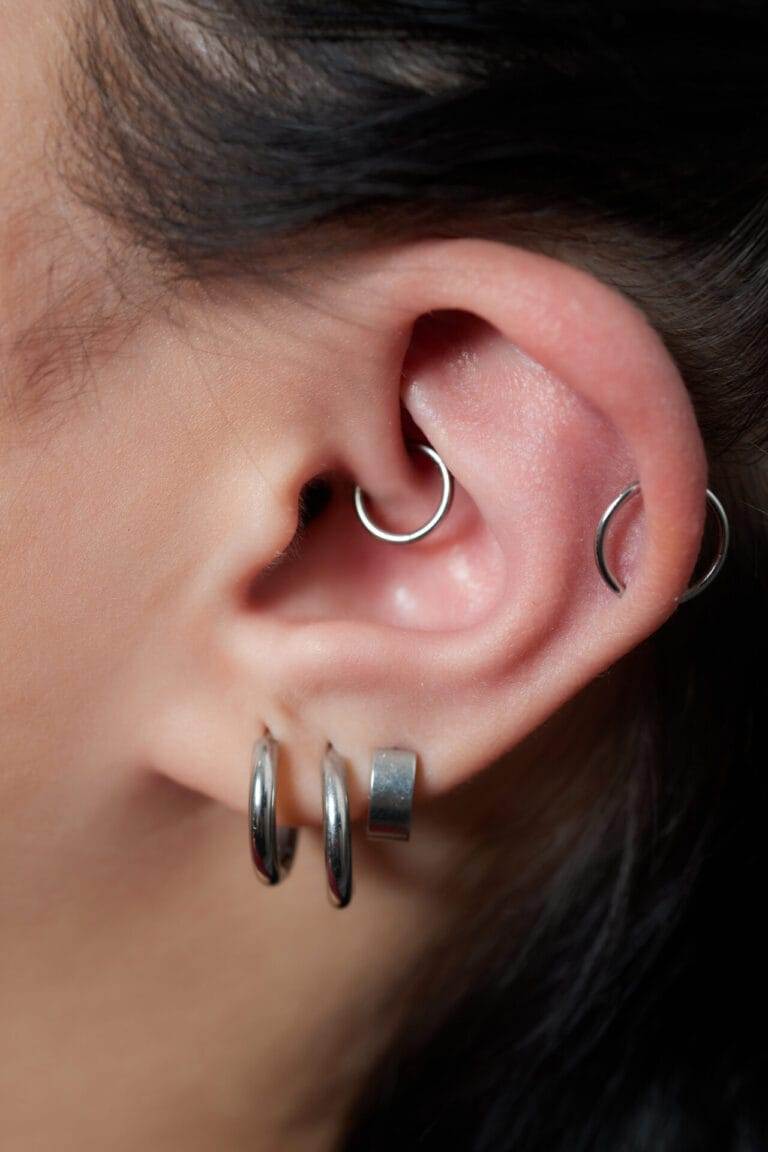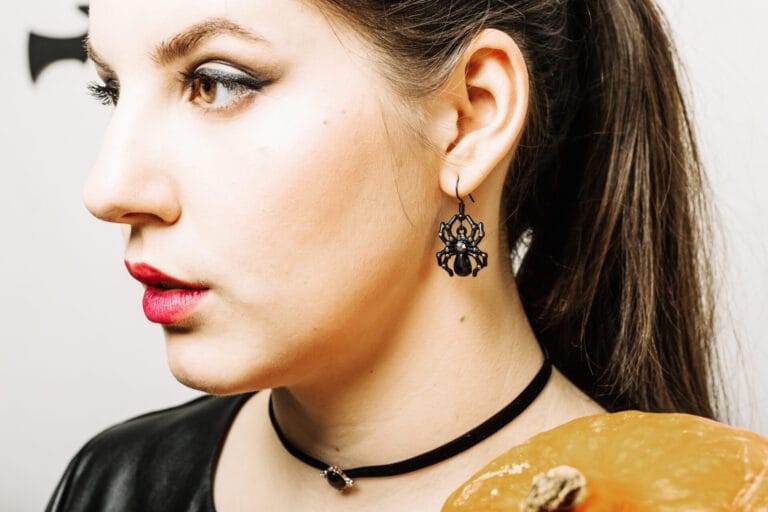Body piercings have become a popular form of self-expression and can enhance one’s appearance. Whether it’s a simple earlobe piercing or a more adventurous genital piercing, choosing the right piercing is crucial to ensure safety and satisfaction. This blog post will provide tips on how to choose the right body piercing and how to care for it properly.
Factors to Consider Before Getting a Body Piercing
Before getting a body piercing, there are several factors to consider. First and foremost, personal style and preference play a significant role in choosing the right piercing. It’s important to choose a piercing that aligns with your personal style and that you will be happy with in the long run.
Another factor to consider is pain tolerance. Some piercings can be more painful than others, so it’s important to take this into account before making a decision. If you have a low pain tolerance, you may want to opt for a less painful piercing or consider using numbing creams or sprays during the procedure.
Healing time is another important factor to consider. Some piercings take longer to heal than others, so it’s important to be aware of this before getting pierced. If you have a job or lifestyle that requires physical activity or exposure to water, you may want to choose a piercing that has a shorter healing time.
Potential risks and complications should also be taken into consideration. While body piercings are generally safe when done by a professional piercer, there is always a risk of infection or other complications. It’s important to be aware of these risks and take proper care of your piercing to minimize them.
Lastly, it’s crucial to choose a professional and reputable piercer. Do your research and read reviews from previous customers before making a decision. Look for certifications and licenses that indicate the piercer’s expertise and professionalism.
Popular Types of Body Piercings
There are numerous types of body piercings to choose from, each with its own unique style and placement. Some popular types of body piercings include ear piercings, nose piercings, lip piercings, eyebrow piercings, navel piercings, nipple piercings, and genital piercings.
Ear piercings are perhaps the most common and versatile type of body piercing. They can range from simple lobe piercings to more intricate cartilage, tragus, and helix piercings. Ear piercings can be easily customized with various types of jewelry, making them a popular choice for self-expression.
Nose piercings are also quite popular and can be done on either the nostril or the septum. Nostril piercings are more common and can be adorned with studs or hoops. Septum piercings, on the other hand, are placed through the cartilage in the middle of the nose and can be worn with a variety of jewelry styles.
Lip piercings, such as labret, Monroe, and Medusa piercings, are another popular choice for those looking to make a statement. These piercings can be placed on the upper or lower lip and can be customized with different types of jewelry.
Eyebrow piercings are a bold choice that can add an edgy look to your appearance. They are typically placed horizontally through the eyebrow and can be adorned with curved barbells or captive bead rings.
Navel piercings have gained popularity in recent years and are often seen as a sexy and feminine choice. They are placed through the skin above the navel and can be worn with various types of jewelry, including curved barbells and captive bead rings.
Nipple piercings are another option for those looking to add some excitement to their body. They can be done on either the male or female nipple and can be adorned with barbells or captive bead rings.
For those looking for a more intimate piercing, genital piercings are available for both men and women. These piercings can enhance sexual pleasure and can be customized to suit individual preferences.
San Diego’s Top Body Piercing Studios
San Diego is home to several top-rated body piercing studios that offer a wide range of services. Some of the top studios in San Diego include Apogee Body Piercing, Superfly Body Piercing, and Enigma Professional Piercing Studio.
Apogee Body Piercing is known for its professional and friendly staff, as well as its clean and sterile environment. They offer a variety of body piercings, including ear, nose, lip, eyebrow, navel, nipple, and genital piercings. They also provide aftercare instructions and sell high-quality jewelry.
Superfly Body Piercing is another popular choice in San Diego. They have a team of experienced piercers who prioritize safety and customer satisfaction. They offer a wide range of body piercings and have a large selection of jewelry to choose from.
Enigma Professional Piercing Studio is known for its attention to detail and commitment to customer service. They have a team of highly skilled piercers who are dedicated to providing a comfortable and safe piercing experience. They offer a variety of body piercings and use high-quality jewelry.
Finding a Reputable Piercer in San Diego
When it comes to finding a reputable piercer in San Diego, it’s important to do your research. Start by looking for studios that have positive reviews and ratings from previous customers. This will give you an idea of the quality of their work and the level of customer satisfaction.
It’s also important to check for certifications and licenses that indicate the piercer’s expertise and professionalism. Look for certifications from organizations such as the Association of Professional Piercers (APP) or the National Environmental Health Association (NEHA). These certifications ensure that the piercer has undergone proper training and follows strict safety and hygiene standards.
Asking for referrals and recommendations from friends, family, or online communities can also be helpful in finding a reputable piercer. Hearing about other people’s experiences can give you a better idea of what to expect and can help you make an informed decision.
Once you have narrowed down your options, it’s a good idea to meet with the piercer beforehand to discuss the procedure and aftercare. This will give you an opportunity to ask any questions you may have and to ensure that you feel comfortable with the piercer and their approach.
The Importance of Aftercare for Your Body Piercing

Proper aftercare is crucial for the healing and maintenance of your body piercing. It’s important to follow the piercer’s instructions and to take proper care of your piercing to minimize the risk of infection or other complications.
Proper cleaning and hygiene are essential for the healing process. Clean your piercing twice a day with a saline solution or a mild soap recommended by your piercer. Avoid touching your piercing with dirty hands and avoid using harsh chemicals or alcohol-based products on or around the piercing.
It’s also important to avoid certain activities and substances that can irritate or damage your piercing. Avoid swimming in pools, hot tubs, or bodies of water until your piercing is fully healed. Avoid exposing your piercing to excessive heat, such as saunas or tanning beds. Avoid wearing tight clothing or jewelry that can put pressure on the piercing.
Following the piercer’s instructions is crucial for proper healing. They will provide you with specific aftercare instructions based on the type of piercing you have. It’s important to follow these instructions carefully and to reach out to your piercer if you have any questions or concerns.
Recognizing signs of infection or complications is also important. If you notice excessive redness, swelling, pain, or discharge, it’s important to seek medical attention as these may be signs of infection. Other signs of complications include excessive bleeding, migration or rejection of the jewelry, or changes in the appearance of the piercing.
How to Choose the Right Jewelry for Your Piercing
Choosing the right jewelry for your piercing is crucial for comfort and healing. There are several factors to consider when choosing jewelry, including size and fit, material and quality, style and design, and compatibility with the piercing type.
Size and fit are important considerations when choosing jewelry for your piercing. The jewelry should fit snugly without being too tight or too loose. It should not cause any discomfort or irritation and should allow for proper cleaning and healing.
Material and quality are also important factors to consider. It’s important to choose jewelry made from high-quality materials that are safe for body piercings. Surgical steel and titanium are popular choices as they are hypoallergenic and resistant to corrosion. Gold is another option, but it’s important to choose high-quality gold that is free from nickel or other allergens.
Style and design are personal preferences that can enhance your piercing. Choose jewelry that reflects your personal style and that you will be happy with in the long run. There are various styles and designs available, including studs, hoops, barbells, captive bead rings, and more.
Compatibility with the piercing type is also important. Different piercings require different types of jewelry. For example, a nostril piercing may require a stud or a hoop, while a navel piercing may require a curved barbell. It’s important to choose jewelry that is specifically designed for your type of piercing to ensure proper healing and comfort.
Different Materials Used for Body Piercing Jewelry
There are several materials used for body piercing jewelry, each with its own unique properties and benefits. Some common materials include surgical steel, titanium, gold, bioplast, and organic materials such as wood, bone, and horn.
Surgical steel is a popular choice for body piercing jewelry due to its durability and hypoallergenic properties. It is resistant to corrosion and is less likely to cause allergic reactions or infections. Surgical steel jewelry is available in various styles and designs, making it a versatile option for different types of piercings.
Titanium is another popular material for body piercing jewelry. It is lightweight, durable, and hypoallergenic, making it a great choice for those with sensitive skin or allergies. Titanium jewelry is available in a wide range of colors and finishes, allowing for customization and personalization.
Gold is a luxurious option for body piercing jewelry. It is available in various karats and colors, allowing for customization and personal style. However, it’s important to choose high-quality gold that is free from nickel or other allergens to minimize the risk of allergic reactions or infections.
Bioplast is a flexible and biocompatible material that is often used for initial piercings or sensitive piercings. It is hypoallergenic and can be easily sterilized, making it a safe choice for body piercing jewelry. Bioplast jewelry is available in various styles and designs, allowing for customization.
Organic materials such as wood, bone, and horn are also used for body piercing jewelry. These materials are natural and can add a unique and earthy look to your piercing. However, it’s important to choose organic materials that are properly treated and finished to ensure safety and hygiene.
Understanding the Healing Process of Your Body Piercing
Understanding the healing process of your body piercing is important for proper care and maintenance. The healing process can vary depending on the type of piercing and individual factors such as age, overall health, and lifestyle.
The healing process typically occurs in several stages. The initial stage is the inflammatory stage, which lasts for the first few days after getting pierced. During this stage, the body responds to the piercing by sending white blood cells to the area to fight off any potential infections. This stage is characterized by redness, swelling, and tenderness.
The next stage is the granulation stage, which occurs within the first few weeks after getting pierced. During this stage, new tissue forms around the piercing, creating a protective barrier. The piercing may still be slightly tender and may produce some discharge during this stage.
The final stage is the maturation stage, which can last several months to a year or more depending on the type of piercing. During this stage, the tissue around the piercing continues to strengthen and mature. The piercing may still be slightly sensitive during this stage, but it should gradually become less noticeable over time.
Common symptoms and sensations during the healing process include redness, swelling, tenderness, itching, and discharge. These symptoms are normal and are part of the body’s natural healing process. However, if you experience excessive pain, bleeding, or signs of infection such as pus or foul odor, it’s important to seek medical attention as these may be signs of complications.
Tips for promoting healing include following proper aftercare instructions provided by your piercer, maintaining good hygiene, avoiding touching or twisting the jewelry, and avoiding activities or substances that can irritate or damage the piercing. It’s also important to eat a healthy diet and get plenty of rest to support your body’s natural healing process.
Enjoying Your Perfectly Fitted Body Piercing in San Diego
Choosing the right body piercing and piercer is crucial for safety and satisfaction. It’s important to consider factors such as personal style, pain tolerance, healing time, potential risks and complications, and the professionalism of the piercer before making a decision.
Proper aftercare and jewelry selection are important for healing and comfort. It’s important to follow the piercer’s instructions, maintain good hygiene, and avoid activities or substances that can irritate or damage the piercing. Choosing high-quality jewelry that fits properly and is compatible with your piercing type is also crucial for comfort and healing.
San Diego offers a variety of top-rated piercing studios to choose from. It’s important to do your research, read reviews and ratings, and check for certifications and licenses before making a decision. Meeting with the piercer beforehand to discuss the procedure and aftercare can also help ensure that you feel comfortable and confident in your choice.
With the right care and attention, a body piercing can be a beautiful and enjoyable addition to one’s appearance. Whether it’s a simple earlobe piercing or a more adventurous genital piercing, choosing the right piercing and taking proper care of it can result in a safe and satisfying experience.
If you’re interested in body piercings, you may also want to check out this article on the growing popularity of piercings and its positive impact on self-expression. It explores how piercings have become a form of personal style and a way for individuals to showcase their unique identities. From traditional ear piercings to more exotic facial piercings, this article provides insights into the different types of piercings and their meanings. Read more





